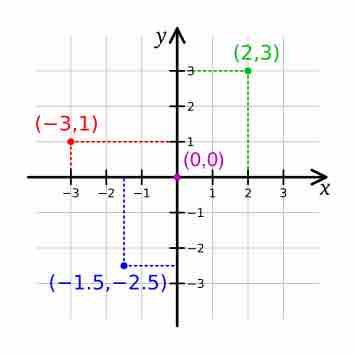Two dimensional, or bi-dimensional, space is a geometric model of the planar projection of the physical universe in which we live. The two dimensions are commonly called length and width. Both directions lie on the same plane. In physics, our bi-dimensional space is viewed as a planar representation of the space in which we move.

Mathematical depiction of bi-dimensional space
Bi-dimensional Cartesian coordinate system.
In art composition, drawing is a form of visual art that makes use of any number of drawing instruments to mark a two-dimensional medium (meaning that the object does not have depth). One of the simplest and most efficient means of communicating visual ideas, the medium has been a popular and fundamental means of public expression throughout human history. Additionally, the relative availability of basic drawing instruments makes drawing more universal than most other media.
Measuring the dimensions of a subject while blocking in the drawing is an important step in producing a realistic rendition of a subject. Tools such as a compass can be used to measure the angles of different sides. These angles can be reproduced on the drawing surface and then rechecked to make sure they are accurate. Another form of measurement is to compare the relative sizes of different parts of the subject with each other. A finger placed at a point along the drawing implement can be used to compare that dimension with other parts of the image. A ruler can be used both as a straightedge and a device to compute proportions. When attempting to draw a complicated shape such as a human figure, it is helpful at first to represent the form with a set of primitive shapes.
Almost any dimensional form can be represented by some combination of the cube, sphere, cylinder, and cone. Once these basic shapes have been assembled into a likeness, then the drawing can be refined into a more accurate and polished form. The lines of the primitive shapes are removed and replaced by the final likeness. A more refined art of figure drawing relies upon the artist possessing a deep understanding of anatomy and the human proportions. A trained artist is familiar with the skeleton structure, joint location, muscle placement, tendon movement, and how the different parts work together during movement. This allows the artist to render more natural poses that do not appear artificially stiff. The artist is also familiar with how the proportions vary depending on the age of the subject, particularly when drawing a portrait.

Drawing human figures
Henri de Toulouse-Lautrec's Madame Palmyre with Her Dog, 1897.